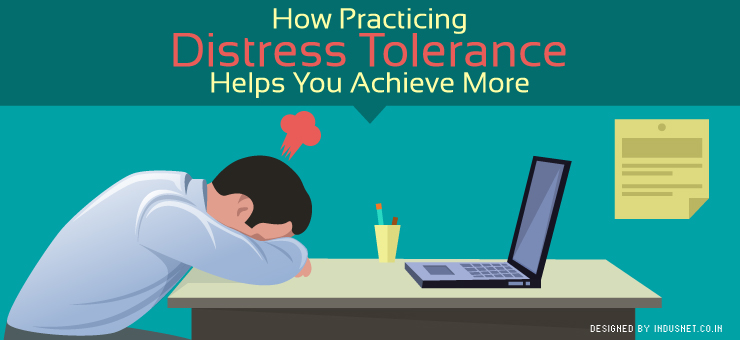
The last time you encountered a client who was being too demanding or the time when you had to give a piece of your mind to one of your erring employees, you probably lost your mind. You probably said things that you did not mean and ended up looking like an authoritarian CEO or like someone who does not have a control over his or her emotions. That can be very damaging to one’s personal brand. If you really want to be a great leader or CEO, you will need to inspire awe and respect in people.
By revealing your vulnerable side, you might end up doing just the opposite. We usually reveal our vulnerabilities when we are distressed. Some people have a greater threshold for distress while others snap very easily. Whether you snap easily or take time to lose it, it is important to practice distress tolerance.
What is distress tolerance?
Distress tolerance is a psychological concept in which you learn to tolerate distressing situations without succumbing to maladaptive thoughts, emotions or behaviors. Even if a situation causes distress, you can learn to deal with it without losing your emotional stability. This means, if there are people around, you will need to learn how to tolerate distress and hide your vulnerabilities. It all looks good and feels good when we read about how empowering it is to reveal our weaknesses. Yet, when our weaknesses are revealed like sore wounds, it might cause us more trouble than benefit.
Marsha Linehan, the eminent clinical psychologist from the U.S.A., who is famous for her dialectical behavior therapy (DBT) for those affected by borderline personality disorder, made the concept of distress tolerance famous. Her body of research revealed that learning to tolerate distressing situations not only helped to cope with that situation but also helped in learning better skills at managing one’s emotions.
At the end of the day, it is when we tolerate distress that we stand out as an example to those who work below us in the hierarchy. For example, if your company runs into losses and you yell at your staff, you certainly are not being a role model to them. Instead, if you practice distress tolerance techniques and learn to cope with that particular distressing situation, chances are that your employees also follow your example and learn to behave and act in a more matured and psychologically sophisticated manner.
Here are some of the ways in which practicing distress tolerance can help you achieve more:
Where can you learn more about distress tolerance?
DBT Self Help is a great website that provides information about how you can learn this valuable skill. It helps you to overcome many stressful situations in life and convert every challenge into something successful. In other words, practicing distress tolerance helps you to wade through the many crises that life and business present and put on a bold face. After all, that is what is required to keep achieving. So, go ahead and learn how to practice distress tolerance. It will certainly help you to live a better life.